How to Cook a Four-Course Meal In a Toaster Oven
On a recent trip to South Korea, I stayed with a friend whose studio apartment kitchen consisted mainly of a refrigerator and a two-burner countertop stove—no oven. When she mentioned missing Western-style breads (like sourdough, French loaves, or anything with a hefty crust) I, as the token bread-baking friend, wished I could help, but without access to a conventional oven I wasn’t sure how. Then I spotted her toaster oven. Challenge accepted.
Whether you’re a college student in a dorm, a person in a hot climate (who’s trying not to heat up their whole house by turning on the oven), or someone who lives in a part of the world where kitchens typically don’t come outfitted with ovens, many people are trying to do the best they can with what they have—and what they have is sometimes a toaster oven. If that’s you, that doesn’t mean you have to be relegated to only eating frozen pizza and, well, toast. If you know how to use this tiny oven strategically, you can actually do a lot with it. So I set out to make a four-course dinner in one. Here are the results of the specific foods I cooked, and some overall strategies I learned along the way.
General Tips:
Some toaster ovens these days are pretty large and heavy-duty, and come with features like a convection setting. If you’re dealing with one of these, follow your recipe as usual. But for a smaller oven with fewer features, you might need to up the temperature 25-50 degrees beyond what the recipe calls for.
Check to see if your toaster oven has any noticeable gaps around the edges where air can escape. Some toaster ovens have removable crumb trays, and there tend to be gaps around those especially. If you do spot any gaps, that’s a surefire indicator that you’ll need to increase your baking temperature to compensate for the hot air that absolutely will escape, and will bring the internal temperature of the oven down.
Yes, you still should preheat a toaster oven like you would a conventional oven.
If your toaster oven is controlled by a timer dial, then perhaps the most cumbersome thing you’ll have to deal with is keeping an eye on that. For example, if your recipe asks you to bake something for 60 minutes, and your timer only goes up to 30 minutes, you’ll have to come back midway through baking and turn the dial all the way back to 30 again. If you don’t, the oven will shut itself off before the job is done.
This might be an obvious one, but size matters. Toaster ovens come in all shapes and sizes, but they’re obviously a great deal smaller than a conventional oven, so be prepared to get creative with adjusting recipes to fit a different sized dish than called for, or cutting a recipe’s scale altogether.
If you’re trying to cook a multicourse meal in one small oven, you’ll need to think strategically about timing, baking order, and what can afford to be served room temperature versus piping hot. You won’t have the luxury of an oven big enough to hold two different dishes or trays, so you’ll need to plan ahead.
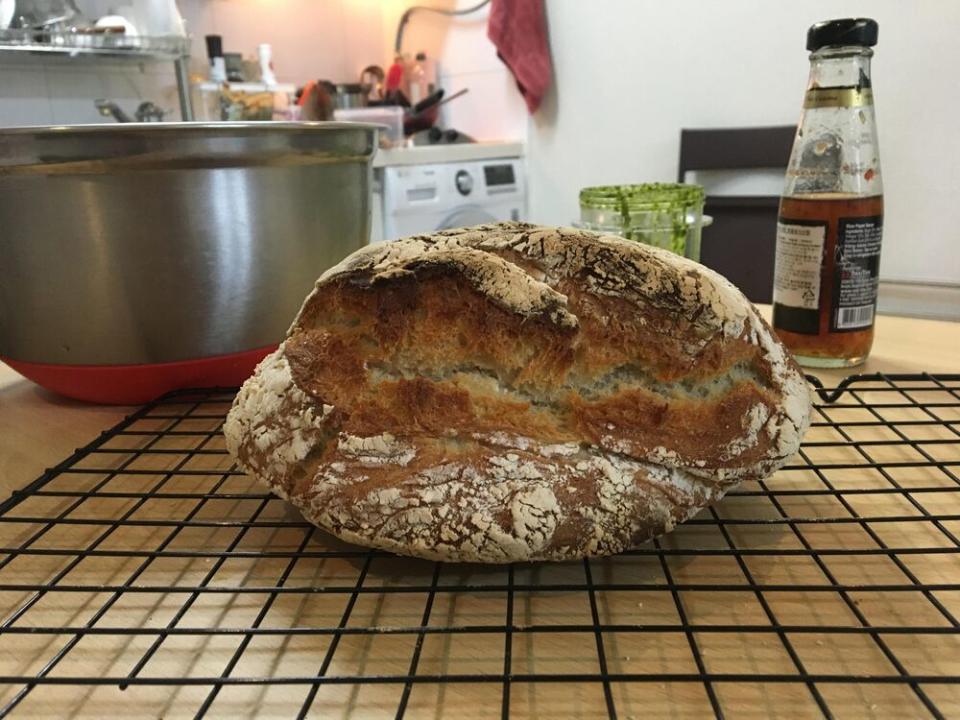
1. How to Make Bread In a Toaster Oven
I had a feeling that I could get any loaf to rise in a toaster oven, but what I was less sure of was whether I could get a deeply browned, thick crust to form on all sides. After all, a conventional toaster oven is designed only to heat on the top and bottom, and not to circulate heat around the sides.
What turned out to be a great hack for helping circulate heat more evenly was baking the bread in a ceramic casserole dish, rather than on a flat tray, and preheating the toaster oven with the casserole dish inside. By the time I added my dough, the casserole dish itself was ready to conduct heat right into the dough.

One extra thing to look out for when cooking bread in a toaster oven is not only that the circumference of the bread will fit the oven but that the height will as well. Keep in mind that if everything goes according to plan, your loaf will rise as it cooks, and could hit the top of the oven unexpectedly. I would recommend using a bread recipe you’re familiar with, so you can anticipate ahead of time how much a loaf can be expected to rise, or cooking bread that mostly keeps its shape throughout baking, like Danish rugbrød. And if you notice the top of the loaf browning long before the inside is fully cooked, you can loosely balance a bit of foil on top to slow that process down—just don’t tightly cover the bread, or it’ll steam more than bake.
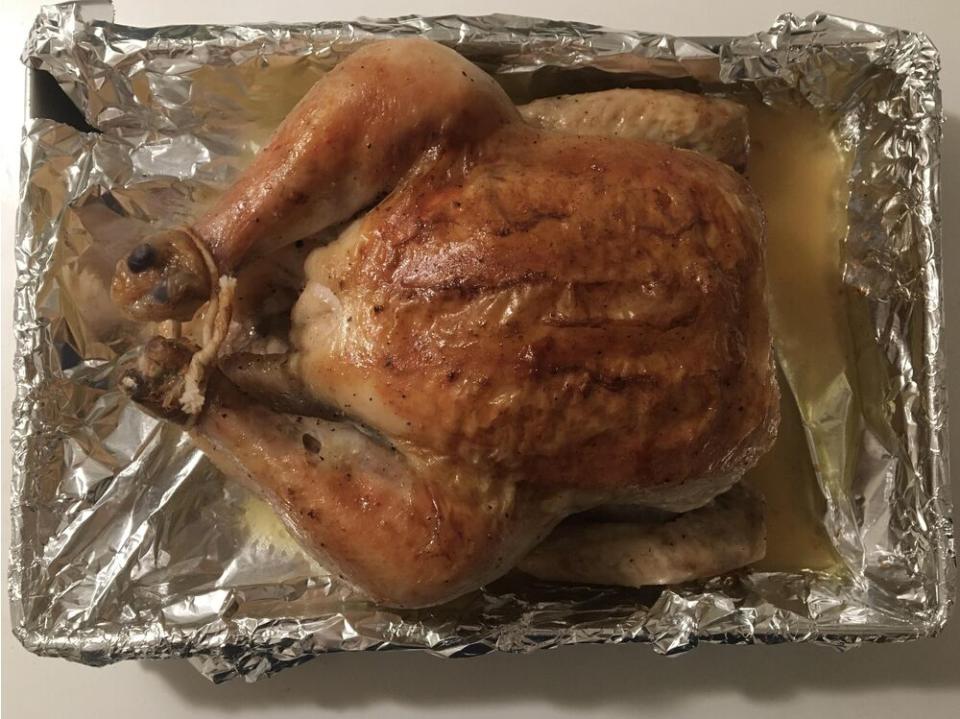
2. How to Roast a Whole Chicken In a Toaster Oven
I think the key here is to understand “whole” liberally. Depending on the specific dimensions of your toaster oven, a totally intact whole chicken might hit the ceiling; a spatchcocked whole chicken might spread out too far; or all of the disconnected component parts of a chicken (two bone-in, skin-on breasts, legs, and wings) might not fit evenly in any of your toast-oven-compatible baking dishes. But each of these would be a completely legitimate approach to cooking a whole chicken in my book, and I think you should pick whatever fits in your toaster oven the best. Just don’t be ashamed or afraid of breaking down a whole chicken in some creative way to get it to fit, if that’s what you need to do. You’re going to carve it up when you serve it anyway, right?
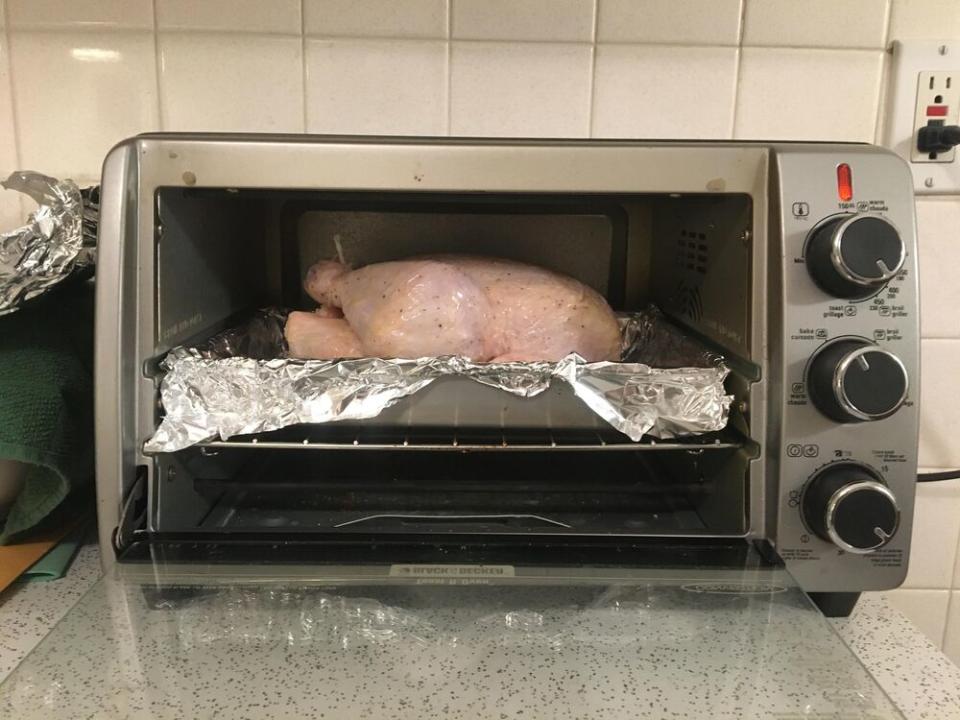
For me, and the narrow-but-tall toaster oven I had access to, the best approach happened to be a whole, intact chicken. And the true litmus test for whether or not it “worked,” to me, was getting shatteringly crispy, golden-brown skin. What turned out to be the key for achieving that in a small oven with limited power was butter basting the bird. Not only is this just an all-around delicious way to roast a chicken (shout out to Julia Child), it is particularly helpful in a toaster oven where the heat never seems to get quite high enough to let rendered chicken fat do the job on its own. The only road bump I hit was that the internal meat took much longer to cook than when I’ve made the same recipe in a conventional oven. So, as with bread, if the skin is looking nice and brown, but the meat is still raw, you can tent the chicken loosely with foil to stop the external browning while giving the meat a chance to catch up.
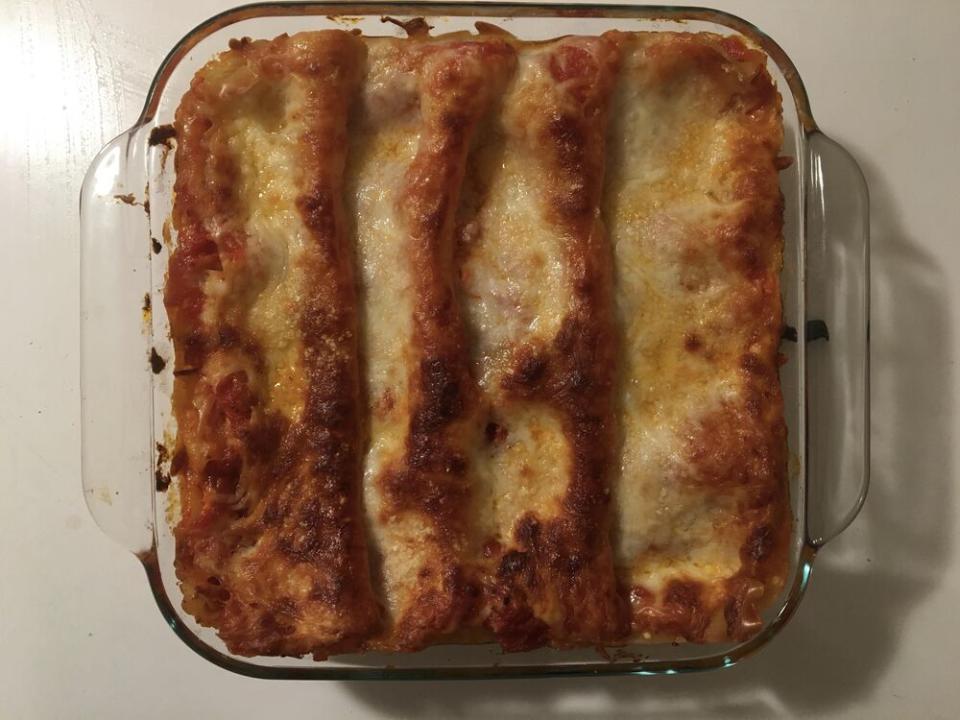
3. How to Bake Lasagna In a Toaster Oven
This was far and away the most successful piece of the toaster oven meal I made. A lasagna was born for this moment. It cooked in the amount of time it was supposed to, it browned properly on top, and the cheese was melted perfectly. The only minor adjustment or consideration that I had to make was about portion size. Most recipes for lasagna are meant to serve a lot of people, and most toaster ovens cannot accommodate a large casserole dish.
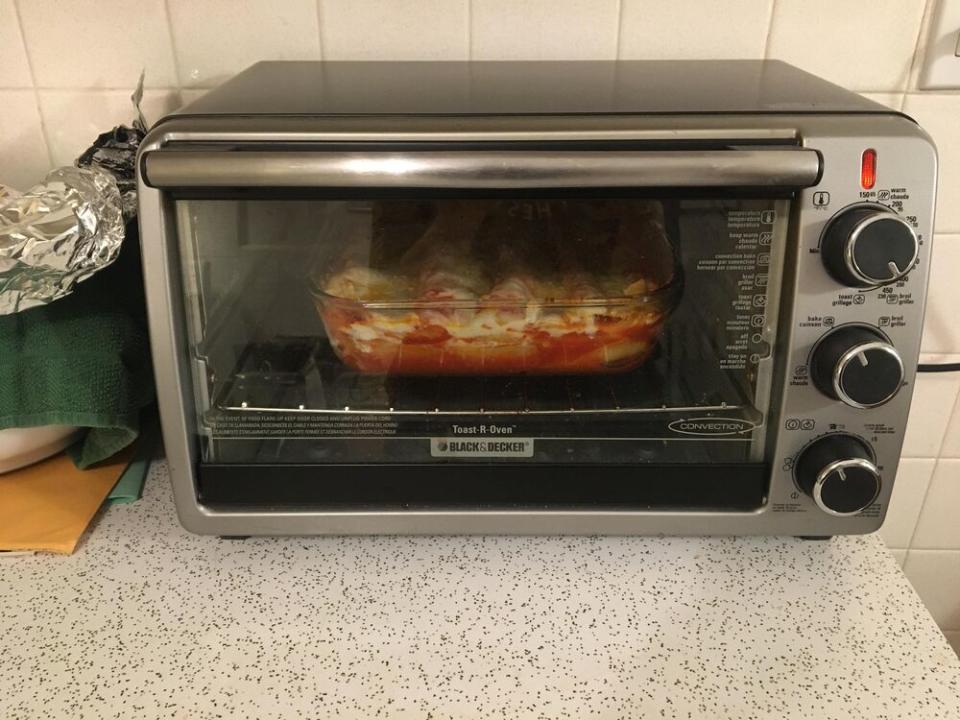
I cut two things in half: my lasagna recipe and my lasagna noodles. I was using a square casserole dish that fit better in the toaster oven, but didn’t play well with the long pasta sheets, so cutting them down to a more manageable size and shape was immensely helpful. Other than that, proceed as usual!
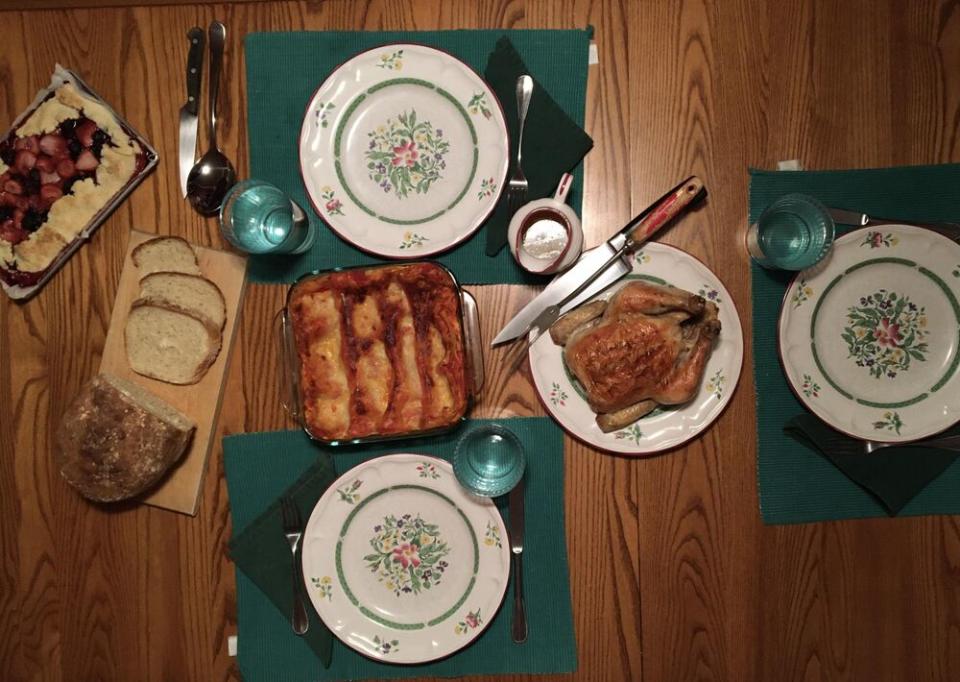
4. How to Make Dessert In a Toaster Oven
For the sake of experimentation a pan-based dessert seemed too easy. I know you can make excellent brownies in a toaster oven (I’ve done it), but I wanted to push the limit a little here and try something more complex. A pie immediately came to mind. It’s often hard to get the filling cooked through without overcooking the crust. But when I looked at the toaster oven at hand, I immediately realized it would be too small to fit the diameter of my pie plate. Enter the humble galette.
A galette, if you’re unfamiliar, is like pie’s free-spirited cousin. Pie dough can be rolled out and shaped however you want (a square, a rectangle, or a circle of any diameter), filled with nearly any filling—savory or sweet—and then roughly shaped by pulling the dough up part way over the filling, leaving the top open. In other words, you have the freedom to make a galette according to the dimensions of your specific toaster oven. In that regard, it’s a perfect match for getting creative within the confines of a limited kitchen.
But I actually found this to be the hardest part of the meal to get right. The filling—mixed berries with a bit of sugar, apple cider vinegar, and lots of cornstarch for thickening—made the bottom of the crust soggy, and while that’s more of a recipe issue than a toaster oven issue, the top part of the crust actually never got appropriately crispy either. I suspect that the confined space of the small oven meant that all the moisture evaporating from the berries was hovering closely to the crust, never giving it a chance to firm up and get golden brown.
Next time, I’d pick a less wet filling, like a pecan pie, and might also brush the crust with an egg wash to help promote browning.

